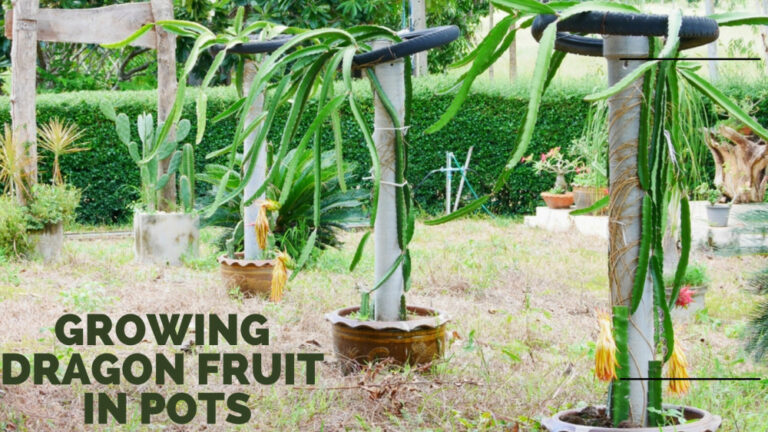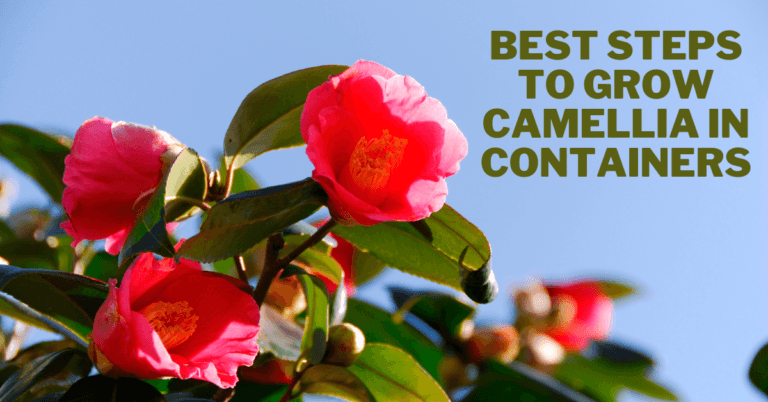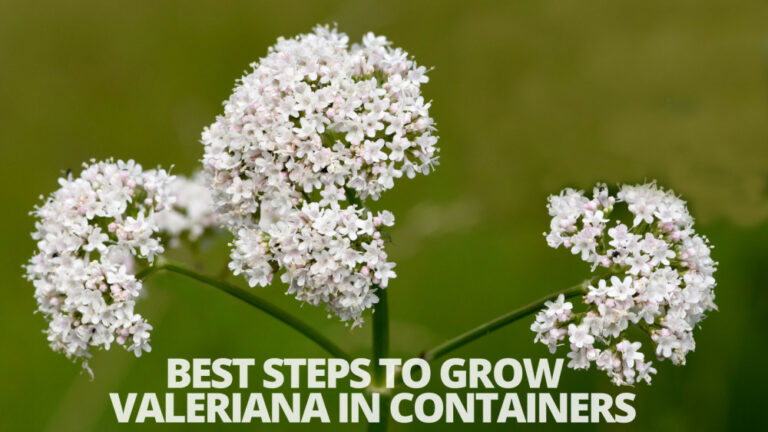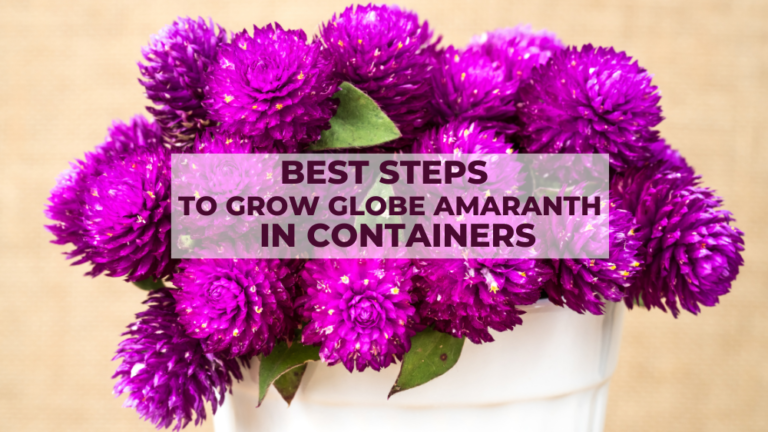10 Steps To Growing Blueberries In Containers
10 Steps To Growing Blueberries In Containers
Blueberries are also tasty and are high in fiber, calcium, magnesium, potassium, vitamin C, and other minerals. Blueberries, however, don't require much space to grow, and the shrubs are ideal for pots.
Here are a few pointers to get you started on your way to a bumper crop of juicy Blueberries In Containers.
Nutrition Facts About Blueberries
Blueberries are low in calories and fat but contain good fibre.
A 100-gram serving of raw blueberries has
- Calories: 57
- Fibre: 2.4 grams
- Water: 84%
- Fat: 0.3 grams
- Carbs: 14.5 grams
- Sugar: 10 grams
- Protein: 0.7 grams

Health Benefits Of Blueberries
1. Blood Pressure Reduction
Maintaining low salt levels is critical for maintaining healthy blood pressure. Blueberries are sodium-free.
Potassium, calcium, and magnesium are all present. In certain studies, diets low in these minerals have been associated with high blood pressure.
It's claimed that getting enough of these minerals in your diet will help you lower your blood pressure.
2. Improve Skin Health
Collagen is the skin's support system. It prevents skin damage caused by the sun, pollution, and smoke by relying on vitamin C as a vital ingredient.
Vitamin C may boost collagen's ability to smooth wrinkles and improve overall skin smoothness. One cup of blueberries contains 24% of the daily vitamin C requirement.
3. Cancer Prevention
Blueberries include potent antioxidants such as vitamins C, and A and other phytonutrients that may help protect cells from disease-linked free radical damage.
According to research, antioxidants may limit tumour growth, reduce inflammation, and help prevent or slow the progression of esophageal, lung, oral, pharynx, endometrial, pancreatic, prostate, and colon cancers.
Blueberries also contain folate, a B vitamin that aids in DNA replication and repair. This can help to prevent cancer cells from forming. Because of mutations in the DNA,
4. Bone Health Maintenance
Iron, phosphorus, calcium, magnesium, manganese, zinc, and vitamin K are all found in blueberries. Each of them is a bone component.
A balanced diet rich in these minerals and vitamins aids in developing and maintaining bone structure and strength. Iron and zinc play critical roles in the body.
Bone and joint strength and flexibility are maintained. Vitamin K deficiency has been related to an increased risk of bone fractures.
Vitamin K supplementation, on the other hand, enhances calcium absorption and may minimize calcium loss.
5. Improving Mental Well-Being
Blueberry eating has been linked to a reduced rate of cognitive deterioration in population-based research.
Studies have also shown blueberries to increase a person's short-term memory and motor coordination and minimize the risk of cognitive deterioration.
6. Diabetic Management
People with type 1 diabetes who eat high-fibre diets have lower blood glucose levels, and people with type 2 diabetes who eat the same diet may have improved blood sugar, lipid, and insulin levels, according to studies. The fiber content of one cup of blueberries is 3.6 grams (g).
Note: Information from a trusted source: PubMed Central (Database from the National Institutes of Health) National Institutes of Health Office of Dietary Supplements (Governmental authority).
The Advantages Of Growing Blueberries In Containers
There are several advantages to growing blueberries in pots, including:
- You can relocate them quickly if a hailstorm or other severe weather is approaching; deer and rabbits won't eat them down in the winter; they're easy to transplant outside if your position changes.
- They're easy to keep clear of weeds and grass. If they're close enough to the home, you might be able to pick the berries before the birds do. If not, bird netting can easily protect plants from birds.
Types Of Blueberries
Furthermore, selecting a blueberry species and cultivar suitable for your climate is critical. Blueberries come in northern and southern highbush varieties, lowbush variants, and rabbiteye varieties.
The growing season for blueberry plants in North America extends from April to late September, depending on the location. A garden center or nursery can help you determine which blueberry kinds suit your area.
1. Lowbush Blueberries (Vaccinium angustifolium)
This creeping variety grows well in colder climates and provides good ground cover. Top Hat is a dwarf variety that thrives in USDA hardiness zones three to seven and is ideal for container gardening.
2. Northern Highbush Blueberries (Vaccinium corymbosum)
It’s a popular blueberry variety in the Northeast, reaching heights of six feet. If you live in a cold climate (USDA hardiness zones three through seven), the Patriot blueberry, a type of northern highbush blueberry that thrives in containers, is a viable option.
3. Southern Highbush Blueberries (Vaccinium arrow ii)
Its natural habitat is the southeastern United States. Sunshine Blue is a compact southern highbush cultivar that grows nicely in containers in USDA hardiness zones 5 through 10.
4. Rabbiteye Blueberries (Vaccinium virgatum or Vaccinium ashei)
This is the most popular blueberry type in the United States' southeastern region, and it thrives in hot, humid temperatures (USDA hardiness zones five through 10).
Plant these blueberry bushes near at least two distinct blueberry kinds to ensure cross-pollination.

The 10 Steps Of Growing Blueberries In Containers
I’ll share step-by-step guidelines to help you grow blueberries in containers successfully.

Step 1: Select Containers
Use a container with a depth of at least 46 cm to accommodate blueberries. Fill the container halfway with a potting mix designed for acid-loving plants like rhododendrons, camellias, and azaleas.
This is critical because blueberries require acidic soil to thrive. If you can't find the proper product, add an acid-loving plant fertilizer to the potting mix.

Step 2: Potting Soil
Acidic soil is ideal for blueberries. For example, a potting mix for azaleas and rhododendrons should have a soil pH of 4.5 to 5.5.
If your soil isn't acidic enough for blueberries to grow, you can raise the pH with ammonium sulphate or organic matter like compost, pine needles, pine bark, oak leaves, or peat moss.

Step 3: Planting
Plant or repot your bushes in the late summer or early fall so the roots can develop and spread before the winter.
Fill your container halfway with azalea or hydrangea potting soil and half with peat moss. Thoroughly wet.
Make a hole twice the size of the original pot in the potting medium. If your shrub is stuck in its pot, gently pry the roots out to encourage them to grow into the new medium.
Plant such that the soil's surface is at the same depth on the stem as when it was first planted. Water thoroughly, and continue as needed as your plant establishes itself.

Step 4: Watering
Blueberries require a lot of water because their roots are short and dry out quickly, but they also prefer sandy, well-draining soil. Put another way, they don't like sitting in water, so keep the soil moist but not soggy.
Don't think that you don't need to water your plants because it's raining. The blueberry plant's leaves can act as an umbrella, preventing water from reaching the plant's base and into the container.
Always use your finger to feel the soil an inch or two below the surface to see if it's damp. Blueberry bushes in pots require 1 to 2 inches of water per week.
To save water, relocate your blueberry bushes into a more shaded spot if you won't be able to water them for a week or more. A layer of compost with a top dressing of pine bark can also be beneficial to maintain moisture.

Step 5: Location
Plants that grow blueberries require six to eight hours of sunlight per day. It's easy to overestimate how much sun an area receives, so taking exact measurements of the sunshine in your garden is crucial.
One simple method is using a watch to time the hours of full-sun exposure on a typical day during the growing season.
However, be aware that blueberry plants can overheat if you live in an area with hot afternoon sun. During this time of day, they will most likely prefer some mild shade.
Step 6: Support And Spacing
To pollinate, you'll need more than one container of blueberries, but duplicate the spacing, depth, and support for all of them.
Each pot should have one blueberry shrub. Place it in its container and bury it as deeply as you did in the nursery pot.
If required, add more soil to the top of the container, leaving the top inch or two unfilled. Water the pot immediately to settle the dirt and close any air holes around the roots. The bushes will not require any assistance to grow.
Step 7: Fertilizer
Because blueberries don't appreciate much fertilizer, a single feeding in the early spring usually suffices. Choose an organic fertilizer such as a cottonseed meal or a blend formulated for acid-loving plants.
Also, don't just fertilize and walk away. Regularly check the soil's pH to ensure it's between 4.0 and 4.8.
Because acid is washed out of the soil over time, you might find that starting with a half-dosage of fertilizer in the spring and then adding a light monthly dose during the growing season is more beneficial.
Step 8: Pollination
When selecting blueberry plants, keep in mind that they require companionship. Cross-pollination requires at least two plants of two distinct kinds to produce fruit; three plants are even better.
Place the pots close together, about 2 to 3 feet apart. To extend your blueberry harvest, it's also a good idea to grow different varieties that produce fruit at different times of the growing season.
Most importantly, select two to three blueberry kinds that bloom simultaneously or overlap to allow bees to pollinate the bushes easily.
However, select varieties within the species. For example, you can't cross-pollinate a rabbiteye variety with a highbush variety.
Step 9: Pruning
Prune mature plants in late February or early March to maintain the proper shape and size. Remove any twigs and branches that are dead or infected.
In addition to fertilizing, scrape off a third of the old potting soil every two to three years and replace it with fresh, acidic potting soil or compost to maintain the necessary low soil pH.
To protect the roots over the winter and retain soil moisture, mulch pots with two inches of acidic mulch in the fall, such as pine needles, conifer wood chips, or bark chips. Maintain a two-inch distance between the mulch and the stem.
Step 10: Overwintering
You'll want to protect your blueberry plants for the winter season once the growing season ends.
Although blueberries are hardy plants, if you live in a cold winter climate, move your pots to the side of your house or into a covered spot to keep them out of the wind.
You can also use some straw to mulch your plants or wrap them in burlap. While the plants do not require much water during the winter months because they are dormant, you should not allow them to dry out completely.
Pests & Diseases Of Blueberries
The most difficult aspect of cultivating blueberries is keeping birds at bay. If you only have a few bushes, bird netting or a scarecrow can be effective, but if you have a large blueberry patch, consider installing a bird deterrent that emits a bird-in-distress sound to deter birds.
Scale, blueberry tip borer, cherry fruit worm, cranberry fruit worm, and plum curculio are all insects to watch out for.
If you live in an area where these pests are common, talk to your local extension office about the recommended deterrents and remedies.
Powdery mildew, rust (which can be treated with neem oil), and leaf spot infections are some fungal diseases that can harm blueberries. Planting genetically resistant varieties is your best defence.
Give your plants plenty of room for air circulation, plant them in full sun, pick up any fallen debris, and replenish the mulch once a year to prevent fungal spores from overwintering in the region.
If you have these issues, you may need to use a fungicide approved for use on food plants. The following are some more common blueberry diseases to be aware of:
1. Anthracnose
Anthracnose is a fungal illness that spreads quickly in wet conditions. Bright pink spore clusters appear as a symptom of the growing berries.
2. Botrytis
Botrytis is another fungus that flourishes in wet environments, causing the fruit to shrink and decay.
3. Canker
Canker is a disease that starts in the lower sections of the canes. Small crimson dots will appear and develop into a bullseye. They will eventually circle and wrap the cane, causing it to die back if left untreated.
4. Mummy Berry
One of the more deadly diseases that damage blueberries is mummy berry. A fungus causes mummy berries.
The blackening of flower clusters, which finally perish, is the first evidence of an infestation. The spores might linger and infect the surviving blooms because it is a fungus. The fruit that results is tan and hard, resembling mummified berries.
5. Twig Blight
Twig blight has a similar appearance to canker at first. Twig blight can affect the crown, smaller branches, and twigs and cause leaf spots as it progresses.
Blueberry Recipes
I love the 2 blueberry recipes. I'm sharing the methods you can try, and don't forget to let us know in the comment box how you liked them.

1. Blueberry Muffins
Ingredients
- Blueberries: 6 to 8 ounces
- Vegan Milk: ½ cup
- All-purpose flour: 1½ cups
- Vanilla extract: 1½ teaspoons
- Granulated sugar: 3/4 cup
- Fine sea salt: ¼ teaspoon
- Baking powder: 2 teaspoons
- Neutral-flavoured oil: 1/3 cup
- Egg: 1 large (Vegan egg substitute: Mix 1 tablespoon of Chia seeds with 3 tablespoons of water and let stand for 10-20 minutes)
Method
- Preheat the oven to 400°F. For big-topped muffins, prepare 8 standard-size muffin cups with paper liners. Line 10 muffin cups with paper liners for standard-size muffins. To help the muffins bake evenly, add 1 to 2 tablespoons of water to the remaining cups.
- Combine the flour, sugar, baking powder, and salt in a large mixing bowl.
- Fill a measuring jug with at least 1 cup of oil. Fill the jug with milk until it reaches the 1-cup mark, then add the egg. Whisk in the vanilla extract.
- Combine the milk mixture with the dry ingredients in a mixing basin with a fork. Don't overmix the ingredients. Stir in the blueberries until everything is well combined.
- Divide the batter evenly among the muffin tins. Top each muffin with a sprinkling of sugar.
- Bake for 15 to 20 minutes, or until tops are dry and a toothpick inserted in the center of a muffin comes out with crumbs rather than wet batter. Allow cooling on a cooling rack.
- Put them in a plastic bag, seal them, and keep them at room temperature for 2 to 3 days. Wrap them in aluminum foil or store them in freezer bags to freeze. Freeze up to three months ahead of time.

2. Blueberry Smoothie
Ingredients
- 1 cup fresh blueberries
- Lite coconut milk: 1 cup
- Vanilla extract: ¼ teaspoon
- Raw sugar: 1 – 2 tablespoons
Method
- In a blender, combine the blueberries.
- Add a splash of light coconut milk to the mix. Almond milk, cashew milk, or dairy milk can also be used.
- Add a dash of vanilla extract or essence.
- Blend until completely smooth.
- Pour the vegan blueberry smoothie into a glass and serve right away.
Note: Use organic blueberries if at all possible. Otherwise, soak the blueberries in a water dish with 1 tablespoon of vinegar to remove pesticides. You can use white vinegar or apple cider vinegar. Allow for a soaking time of 15 to 20 minutes.
3. Best Vegan Blueberry Muffin Recipes For Your Kids
4. Delicious Blueberry Recipes For Your Kids
Conclusion
I trust you enjoyed this article on the 10 Steps To Growing Blueberries In Containers. Please stay tuned for more blog posts to come shortly. Take care!
JeannetteZ
>>>Please click here to read my all-inclusive article about Container Gardening<<<
>>>Are you interested in homegrown herbs and medicine? Please click here to find out more about it!<<<
Your Opinion Is Important To Me
Thoughts? Ideas? Questions? I would love to hear from you. Please leave me your questions, experience, and remarks about this article on the 10 Steps To Growing Blueberries In Containers in the comments section below. You can also reach me by email at Jeannette@Close-To-Nature.org.
Disclosure
This post may contain affiliate links. I earn from qualifying purchases as an Amazon Associate and other affiliate programs. Please read my full affiliate disclosure.
You might also enjoy these blog posts:
Follow 10 Steps To Growing Banana Trees In Containers
9 Steps To Growing Swiss Chard In Containers
Simple Guide To Growing Watermelon In Containers
Growing Strawberries In Hanging Containers
Best Gardening Lessons To Learn








